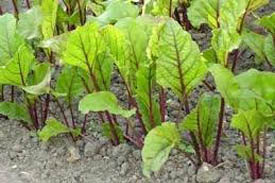Gardening: Brassica is cabbage II
 There are many considerations for the health conscious gardener besides lacing the cabbage patch with poisons. The foremost consideration in the selection of cabbage seed, besides the seasonal varieties, is to consider the resistance to insect attack. Many insect resistant strains have been developed, yet the insects themselves may adapt to living conditions in one locality faster than another. So what works in my neighborhood, may not work in yours, and vice versa.
There are many considerations for the health conscious gardener besides lacing the cabbage patch with poisons. The foremost consideration in the selection of cabbage seed, besides the seasonal varieties, is to consider the resistance to insect attack. Many insect resistant strains have been developed, yet the insects themselves may adapt to living conditions in one locality faster than another. So what works in my neighborhood, may not work in yours, and vice versa.
The following varieties may offer good protection against Cabbage looper and important cabbageworms: Mammoth Red Rock, Savoy Chieftain, and Savoy Perfection Drumhead. Slightly less resistance against these two pests are the following: Penn State Ball Head, Early Flat Dutch, Badger Ball Head, Danish Ball head, Midseason Market, Jersey Wakefield, Red Acre, Charleston Wakefield, Marrion Market, Early Glory, Green Acre, Wisconsin All Season, Wisconsin Hollander, Globe, Succession and Early Round Dutch. The most susceptible are: Copenhagen Market 86, Golden Acre, Elite and Stein’s Flat Dutch.
The Striped flea beetle is a pest in some localities and the following cabbages are the most resistant: Copenhagen Market 86, Savoy Perfection Drumhead, Mammoth Red Rock, Stein’s Early Flat Dutch, and Early Jersey Wakefield. The worst is: North Star and Northern Belle. Some gardeners have problems with the Harlequin bug and the Mexican bean beetle devouring their cabbage.
The following are the most resistant strains: Copenhagen Market 86, Headstart, Early Jersey Wakefield, Stein’s Flat Dutch and Savoy Perfection Drumhead. The most problem prone is: Michihli Chinese cabbage. An irritant to gardeners can be the Diamondback moth (worms). The most resistant are: Michihli Chinese and Mammoth Red Rock. The following offer fair protection: Stein’s Early Flat Dutch, Savoy Perfection Drumhead, Early Jersey Wakefield and Ferry’s Round Dutch. The worst is: Copenhagen Market 86.
Organic measure may be taken to reduce insect attacks. Companion planting is an old method that has its devoted following. For example, within the cabbage patch you may interplant sage, rosemary, thyme, chives, onion, garlic, oregano and marjoram. Teas made from chamomile, peppermint and dill, heavily sprayed are good deterrents to the insects. Inter-planting cabbage with potatoes is an age-old tradition in parts of Europe, adding to the growth and vigor of both plants. Probably the white cabbage butterfly is the biggest pest, causing the most worm damage on cabbage. Hyssop, thyme and wormwood, perhaps southernwood too, are excellent in their ability to repel the little flying daytime butterflies. The variety of scents is thought to confuse the insects; the plants themselves enhance each other’s growth and vigor. Whether or not you think this will work, it would be an interesting experiment this year. Plant quite heavily though. The scenting ability of a little flying cabbage butterfly is thousands of times better than a hound hot on a trail of a raccoon.
Aphids seem to bother some gardeners. They attack in cycles, usually with the growing cycle of the plant under attack. If they bother your little Fall seedlings, a good use for old woody mint plants is to lay them over the straw mulch beds in the cabbage patch. Radish is a good spring deterrent. Lastly, a thought on cutworms, striking early in the season. Wrap a little piece of stiff paper around the base of the plant, or put a stick next to the stem. Cutworms have to wrap around the stem to chew it. I put cutworm “collars” around most of my early seedlings.
Biological control is perhaps the most effective in the long run, providing you are diligent in spraying every three days or so depending on the morning dew and/or rains washing the bacterium off the plant. Bacillus Thursingiensis (BT for short) is a commercial product available in most all garden supply catalogs and garden supply businesses. This product really works to rid the plant of the green worms of all insects. It is harmless to humans. It may be purchased in liquid form, sold as BT, or in powder form under the name of Dipel. Either dusting or spraying to suit your preference.
Did you ever find some little white, chalky looking cabbage worms that appear dead or dying in your cabbage patch? If so, you will want to consider collecting a dozen of these little white worms, put them in your gardener’s blender and zip them up with a 1/2 cup of water and squirt of liquid soap. Collect some more and put them in a plastic baggie, and freeze for later use. Take your blenderized solution and add to your big sprayer, fill with water, and spray up to one acre of cabbages. The virus in the little white worms is nuclear polyhydrosis (NPV), and it will be as effective, or more so than BT. …plus cheaper by a long shot. If you find some little white worms, let me know.. .they are scarce, that’s why I catch and freeze them. Commercial ventures can save a lot of money and time with a handful of these NPV infected worms.
God Bless
Copyright: 2009, Back2theLand, Mark Steel



